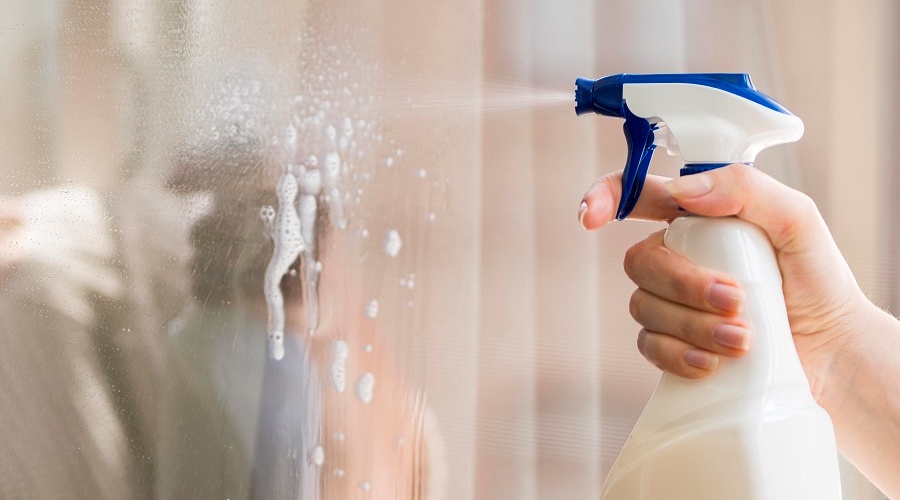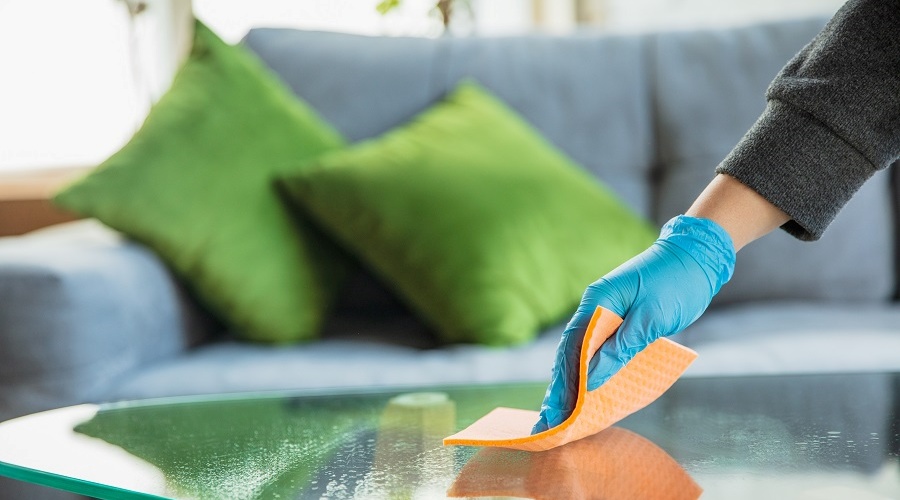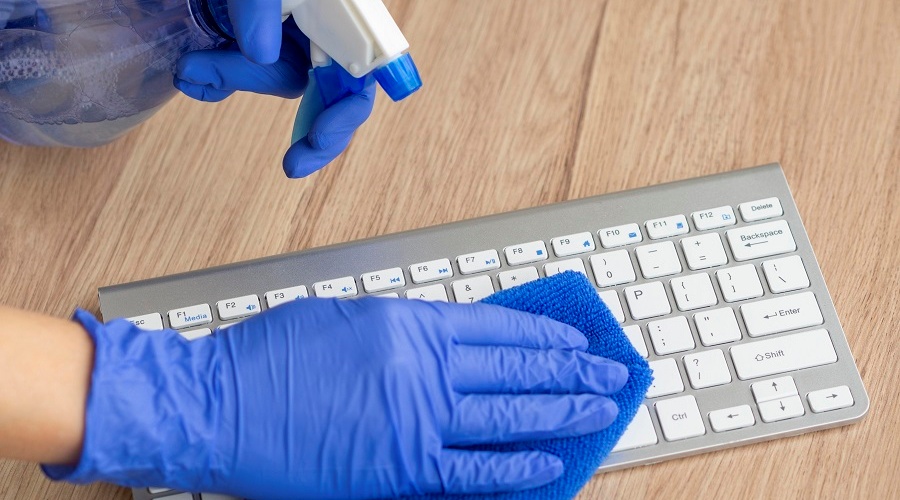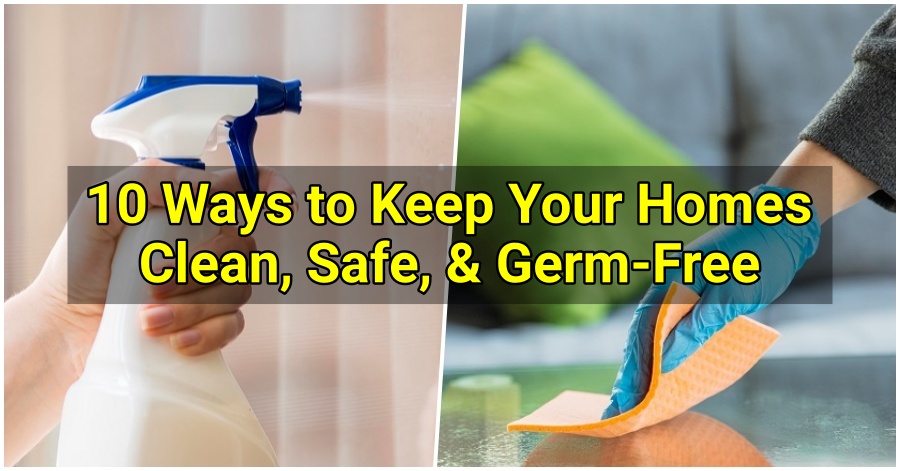The way things are going, the current global crisis seems far from over. All of us need to take extra precautions to keep ourselves and our families safe and healthy. These measures include the frequent cleaning and disinfection of our homes.
While experts have said that the outbreak spreads mainly through respiratory “droplets” from one person to another, studies have shown that it may also occur via surface transmission. For instance, when you touch a surface that an infected person had coughed on, and then happened to touch your mouth, eyes, or nose — there’s a possibility that you could get infected!
Contents
- How to Keep Your House Clean, Safe, and Germ-Free
- 1. Know the difference between “cleaning” and “disinfecting.”
- 2. Use the right cleaning and disinfecting products.
- 3. Disinfect “high touch” surfaces everyday.
- 4. Keep your electronic devices clean.
- 5. Clean your clothes and linen regularly.
- 6. Keep your hands clean when handling food and packaging.
- 7. Wash your hands as much as you can.
- Cleaning & Disinfection if there’s a Sick Person in the House

How to Keep Your House Clean, Safe, and Germ-Free
That being said, surface transmission poses a lower risk than direct, person-to-person transmission. Still, regularly cleaning and disinfecting your home, especially the “high touch” surfaces, is recommended. This could help lessen the possibility of exposure, as there are times when people and items (e.g. food and grocery deliveries) come in and out of your house.
To help keep your house clean, safe, and germ-free, be sure to follow these tips:
1. Know the difference between “cleaning” and “disinfecting.”
First of all, you need to remember that cleaning and disinfecting are not the same. Cleaning is simply the removal of dust, dirt, and particles on a surface. Disinfecting, on the other hand, may be referred to as “deep cleaning,” wherein you cleanse something very thoroughly, in order to kill any bacteria or germs that might be “living” on a surface.
Typically, cleaning a surface is the first step, followed by disinfecting.
2. Use the right cleaning and disinfecting products.
Even if you scrub as hard as you can, but don’t use the right products, your cleaning efforts may not be enough to kill bacteria or germs. You need to use effective products, such as those recommended by the Environmental Protection Agency (EPA), a United States agency established to help protect human and environmental health.
According to the EPA, the following disinfectants are effective in killing viruses:
- Isopropyl alcohol
- Hydrogen peroxide
- Disinfectant sprays (e.g. Clorox, Lysol)
- Disinfectant wipes (e.g. Clorox, Lysol, other store brand wipes)
Of course, it’s also important to know the proper method for using these cleaning products. The EPA recommends letting the product remain wet on a surface for at least 10 minutes; this could kill 99.9 percent of germs.
NOTE: Parents, make sure that your cleaning products are kept out of reach of young kids, to prevent exposure and poisoning.

3. Disinfect “high touch” surfaces everyday.
It’s not necessary to make your entire home spotlessly clean everyday, but you should definitely disinfect “high touch” surfaces daily. These are the surfaces that are most frequently touched/used, including:
- Faucets
- Table surfaces
- Light switches
- Staircase railings
- Door knobs/handles
- Toilet seats and handles
- Bathroom and kitchen counters
- Cabinet and drawer knobs/pulls
- Refrigerator, microwave, and dishwasher handles
Don’t forget to wear gloves while disinfecting these surfaces. If you are wearing disposable gloves, dispose of them immediately after disinfecting. If you are wearing reusable doves, disinfect them right after you’ve finished.
4. Keep your electronic devices clean.
Aside from door knobs, kitchen counters, and toilet seats, electronic devices are also among the most frequently touched surfaces around the house. These include:
- Cellphones
- Tablets
- Remote controls
- Computer keyboards
- Game controllers
How can you keep your electronic devices clean? Simply follow the manufacturer’s instructions for cleaning and disinfection. A general rule of thumb is to use alcohol-based wipes, or sprays containing at least 70 percent alcohol, before drying the surface thoroughly. You could also place a waterproof cover on your gadgets for easier cleaning.

5. Clean your clothes and linen regularly.
While it hasn’t been proven whether the virus can live on clothes or linen, laundering them regularly is still essential, especially if there is a sick person in your home. When cleaning clothes, towels, linen, and even plush toys — be sure to follow the manufacturer’s instructions.
Avoid shaking dirty laundry, and wear gloves when handling clothes by a sick person. Afterwards, remove your gloves and wash your hands immediately.
6. Keep your hands clean when handling food and packaging.
It’s not likely that the viruses can live long on food and packaging, but then again, it’s better to be safe than sorry. After buying groceries, be sure to wash your hands as soon as you get home. If possible, try to limit going out buy ordering online instead. Here’s a list of grocery apps so you don’t have to go out when buying food and other essentials.
While handling and preparing food, don’t forget to wash your hands frequently. Do the same after receiving grocery deliveries, as well as after buying and taking home ordered food.
7. Wash your hands as much as you can.
As you may have noticed, we have mentioned “hand washing” several times now. Indeed, washing your hands is the first step towards protecting yourself against any germs and viruses. The general rule is to wash using soap and water, including a 20-second scrub before rinsing.
If you don’t have soap and water immediately on hand, you can use an alcohol-based sanitizer and do a “hand rub” instead. Check out our previous article on hand washing vs. hand rubbing, for more detailed instructions.

Cleaning & Disinfection if there’s a Sick Person in the House
If there is a sick person in the house, it’s important to take extra measures in cleaning and disinfecting your home. In particular, make sure that you:
8. Clean the person’s room only when needed.
For everyone’s safety, designating a separate room for the sick person is a must. As much as possible, clean and disinfect the room only when absolutely needed (e.g. if the area is visibly soiled). The important thing is to limit your contact with the person.
9. Provide the person with cleaning tools.
If the sick person is able to clean his/her room, simply provide cleaning tools like cleaners, disinfectants, paper towels, and tissues. This way you can limit contact for everyone’s safety.
10. Provide the person with his/her own cutlery.
To limit contact, provide the sick person with his/her own plates, glasses, and utensils. These should be washed with hot water and soap, while wearing gloves or using a dishwasher.
In addition, the sick person should have his/her own trash can. Don’t forget to use gloves when handling and disposing trash, and of course, wash your hands thoroughly afterwards.
By following these tips, you can keep your home clean and germ free. This way, you can help ensure your family’s overall health and safety as well. For more information, here are other ways to stay healthy and eco-friendly during the global crisis.
